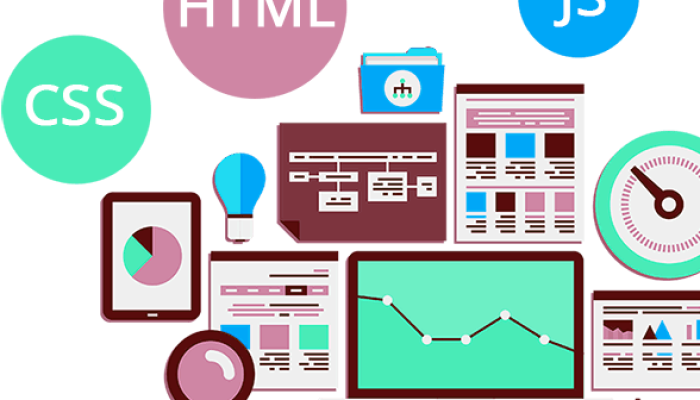
Web Development-FrontEnd
Introduction Web development will be one of the most in-demand skills in the next decade. With 50% of the global population using the internet daily, it makes sense that tech skills will keep growing in demand. The amount of people using the internet is only going to increase. With web development classes for kids, you can turn their passion for devices or computer games into a learning opportunity. Online web development classes for kids help them to design and develop websites using HTML, CSS and JavaScript programming. Web design for kids emphasis on design thinking, students will solve real world problems and create variety of web projects like blogs, e-commerce, wiki pages and personal webpage with responsive pages and latest design trends. Tinker Coders offer an online web development course for kids. The course is designed to teach children the basics of web development. Through various projects and exercises children will learn HTML, CSS & web Design Coding Classes. We provide the opportunity for children to learn at their own pace by testing their knowledge and giving them feedback on their progress. In web development course, kids will learn how to create their own simple website using HTML and CSS. This course will teach them to use the basics of these languages, while they create and build their project.
Course Details
Building off the beginner course, you’ll explore more advanced concepts in HTML & CSS, the foundation of all web pages. This course will explore more uncommonly used HTML tags and CSS styles. By the end, You’ll be able to set up the complex page structures and styles to create attractive and engaging production quality layouts.
Lesson 1: The Mysterious Meta Tags
Meta tags are used to provide information about a web page, but they can be mysterious if you don’t know what they are for. This module will explore the different types of meta tags and how to use them.
Lesson 2: Fun with Fonts
Fonts are an important part of web design, and this module will show you how to use them effectively. You’ll learn about different font styles and how to choose the right one for your project.
Lesson 3: Creating Cool Layouts with CSS
CSS is a powerful tool for creating layouts, and this module will show you how to use it to its full potential. You’ll learn about different CSS properties and how to use them to create responsive layouts that look great on any device.
Lesson 4: Advanced HTML Techniques
There are many HTML tags that are not commonly used, but can be very useful in certain situations. This module will explore some of these less common tags and how to use them in your own projects.
Lesson 5: Putting it all Together
In this module, you’ll put everything you’ve learned together to create a production-quality web page layout. You’ll learn how to integrate all of the different elements into a cohesive design that looks great and functions well.”
Javascript For Kids is a group of courses designed to teach children how to program computers. They will learn how to write code, how to debug code, and how to create games using PhaserJS and KaboomJS. These courses are perfect for children who are interested in learning how to code, and they will have a lot of fun doing it!
Lesson 1: Introduction to Javascript, Variables and Datatypes
In this module, you will learn about the different types of variables in JavaScript and how to use them.
Lesson 2: Operators and Conditionals, Control Flow
In this module, you will learn how to use Operators and Conditionals, Control Flow in JavaScript.
Lesson 3: Loops and Functions
In this module, you will learn how to use Loops and Functions in JavaScript.
Lesson 4: String and Arrays
In this module, you will learn how to use String and Arrays in JavaScript.
Lesson 5: Other Modules – Math, Random and Boolean
In this module, you will learn about Other Modules – Math, Random and Boolean in JavaScript.
Lesson 6: Other Modules – DOM and Event Handling
In this module, you will learn about DOM and Event Handling in JavaScript.
- OVERVIEW OF BOOTSTRAP
✓ Introduction of Bootstrap
✓ Syntax of Bootstrap
✓ Container and Container-fluid
✓ Connectivity of Bootstrap in page
- Bootstrap Component
✓ Jumbotron
✓ Button
✓ Grid
✓ Table
✓ Form
✓ Alert
✓ Wells
✓ Badge and label
✓ Panels
✓ Pagination
✓ Pager
✓ Image
✓ Glyphicon
✓ Carousel
✓ Progress Bar
✓ List Group
✓ Dropdown
✓ Collapse
- Bootstrap Advance Component
✓ Tabs/Pill
✓ Navbar
✓ Input Types
✓ Modals
✓ Popover
✓ Scrollspy
- Bootstrap Utilities
✓ Bootstrap Border
✓ Bootstrap Clearfix
✓ Bootstrap Close Icons
✓ Bootstrap Colors
✓ Display Flexbox
✓ Display Property
✓ Image Replacement
✓ Invisible Content
✓ Bootstrap Position
✓ Responsive helpers
✓ Screen Readers
✓ Bootstrap sizing
✓ Bootstrap spacing
✓ Bootstrap Typography
- Git-GitHub Section 1
Download & Install Git on Mac & Windows Git Setup: Your Name & Email Create a New Local Git Repository (Initialize Repository) Stage & Commit Files
- Git-GitHub Section 2 GitHub: Push to a Remote Repository GitHub: Pull From a Remote Repository GitHub: Clone (Download) a Remote Repository
- Git-GitHub Section 3 How to Handle Merge Conflicts View a List of Commits & Undo Changes Branches: Create, Switch, Push, Merge, & Delete
- Basics of Javascript and ECMAScript
- Introduction to React
- Role of NodeJs and NPM in React
- Introduction and Implementation of Technologies in Front End
Development
- Installation and Benefits of VS Code
- Installation of React plugins in IDE
- Installation of Node, and NPM
- Installation of React
- Data-flow in React
- How to create NPM package for React
- React Component : use and benefits
- How to render view in React
- Different Methods to Render view and Components
- Es6 with React
- JSX
- What is JSX
- Why JSX
- Rules of JSX implementation
- Components with and without JSX
- React Props and State
- React Prop in practice
- React State in practice
- React Developer Tool
- Event Handling
- More about React State: Counter App
- Handling Lists
- Handling User Input
- Styling Your Component
- Basics of React Interview Questions
- Introduction of Bootstrap
- Installation of Bootstrap
- How to implement theme in react
- How to create layout based structure in React
- One Project based on React Js
- Lifecycle methods
- Hooks
- Introducing Hooks
- Using the State Hook
- Using the Effect Hook
- Rules of Hooks
- Building Your Own Hooks
- Hooks API Reference
- Fetching data
- Example app
- Diving deeper interview questions
Just Redux
- Lesson 1. What is redux
- Lesson 2. Why redux
- Lesson 3. Redux principles
- Lesson 4. Install and setup redux
- Lesson 5. Creating actions, reducer and store
Immutable.js for immutable data structures
- Lesson 1. What is Immutable.js?
- Lesson 2. Immutable collections
- Lesson 3. Lists
- Lesson 4. Maps
- Lesson 5. Sets
React Redux
- Lesson 1. What is React Redux
- Lesson 2. Why React Redux
- Lesson 3. Install and setup
- Lesson 4. Presentational vs Container components
- Lesson 5. Understand high order component
- Lesson 6. Understanding mapStateToProps and mapDispatchtToProps usage
Redux saga(Redux middleware)
- Lesson 1. Why redux middleware
- Lesson 2. Available redux middleware choices
- Lesson 3. What is redux saga
- Lesson 4. Install and setup redux saga
- Lesson 5. Working with Saga helpers
- Lesson 6. Sagas vs promises
Project
- Lesson 1. Performing CRUD Operations in ReactJS
